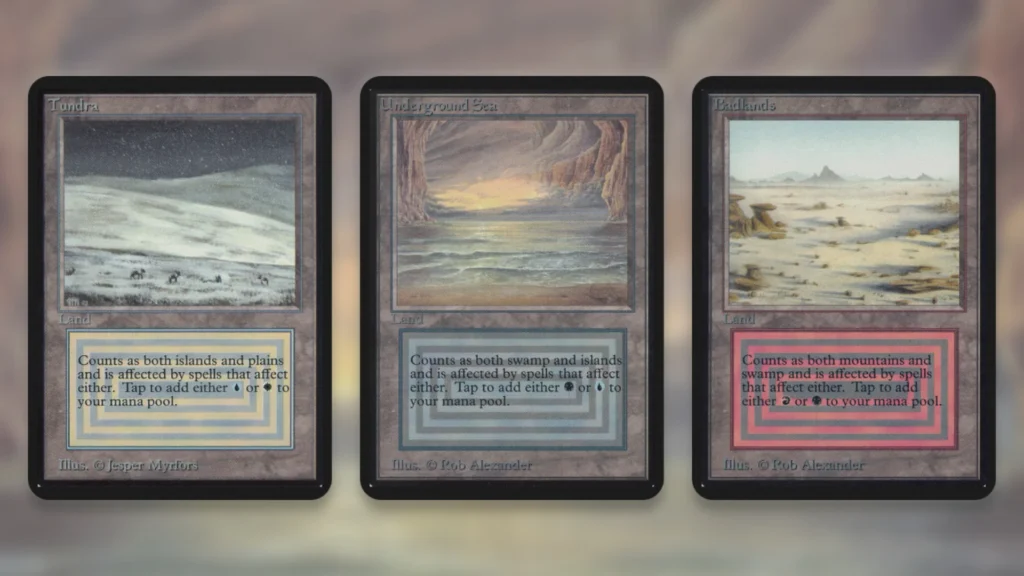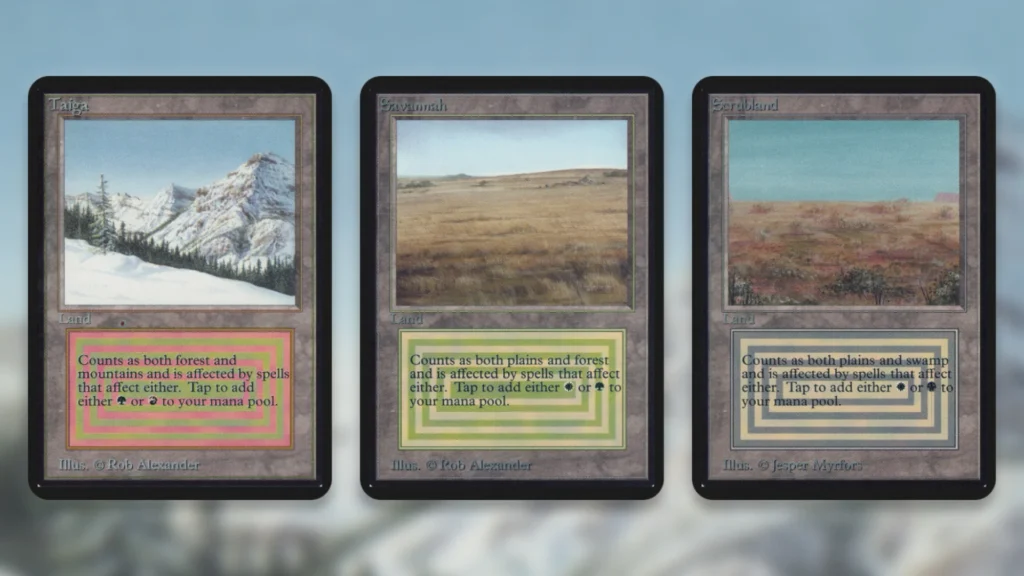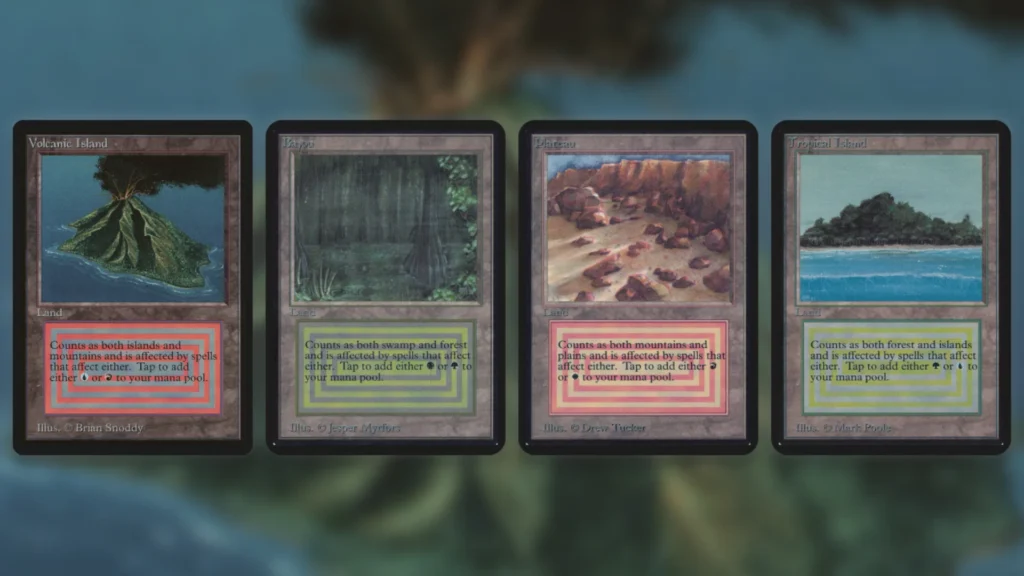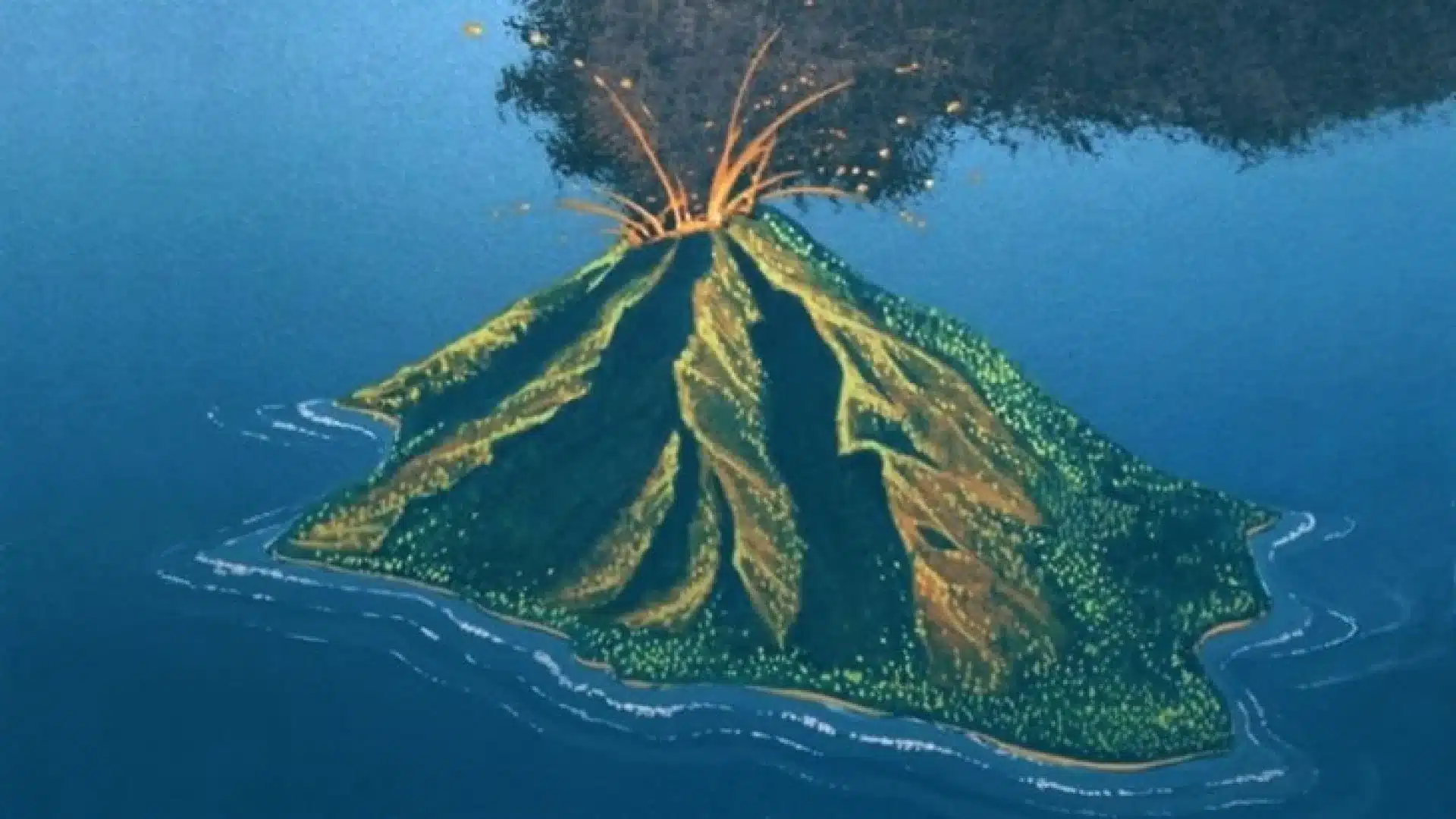The MTG Dual Lands are the oldest and best multi-color lands in all of Magic: The Gathering. Wizards of the Coast has printed countless imitators over the years, but none have come close to their power and versatility. Because of this, the full cycle remains in high demand and incredibly expensive to this day. Today, we’re going to break down these ten legendary lands and what exactly makes them so good, and so sought-after.
What Are The MTG Dual Lands?

The MTG Dual Lands are a cycle of 10 lands, all of which tap for two different colors of mana. In the Magic: The Gathering community, they’re often referred to as the “OG Dual Lands,” or simply the “Dual Lands.”
There are two main factors that make the Dual Lands special. First of all, they all enter play untapped with no conditions, which is rare for lands like this. This means they offer more flexibility than Basic Lands, without the drawbacks you’d expect.
The other important aspect here is that all of the Dual Lands come with two Basic Land types. Tundra, the blue/white Dual Land, counts as both a Plains and an Island, for example. Most notably, this allows you to tutor them up using the Fetchlands, which specifically look for lands with Basic Land types. It also means they enable cards that require you to have different land types in play, such as Domain.
All but one of the Dual Lands were originally printed in the first Magic: The Gathering expansion, Alpha. Due to a printing error, Volcanic Island never made the cut and didn’t show up until Beta. The rest of the Dual Lands got a reprint here, as well as in the Unlimited and Revised expansions that followed.
These four printings are all that the Dual Lands will ever get, since they’re part of the Reserved List. This is a list of cards Wizards has promised to never reprint again.
How Expensive Are The MTG Dual Lands?

The MTG Dual Lands vary wildly in terms of price, with some costing nearly $10,000, and some sitting at around $400.
There are a number of factors that determine the price of a given Dual Land. The biggest factor is which set it comes from. There are four versions of each available: Alpha, Beta, Unlimited, and Revised. This is true for every Dual Land except Volcanic Island, which wasn’t printed in Alpha. For every other Dual Land, the Alpha version is the most expensive, followed by the Beta, then the Unlimited, then the Revised. This is because the earlier sets had smaller print runs, making them rarer.
There’s also a lot of variance in price across the different Dual Lands. Some color combinations are more popular than others, and therefore some Dual Lands are more sought after than others. Plateau, the green/white Dual Land, will cost between $340 and $3300, depending on version. Underground Sea, the blue/black Dual Land, by contrast, will cost between $998 and $9,950.
Finally, the condition of the individual card also has a big impact on its price. A near mint copy of a card, meaning it has no damage, will go for far more than a Dual Land that’s seen a lot of rough play.
Even on the low end, the Dual Lands are still very expensive. This is down to two main factors. First of all, unlike some of Magic’s other classic design mistakes, like Black Lotus, you can actually play the Dual Lands in multiple formats. They’re fully legal in Legacy, Vintage, Commander, and even Oathbreaker. They’re some of the best lands available in these formats, so there’s a lot of demand for them. Throw in the fact that they can’t be reprinted due to being on the Reserved List, and these price tags aren’t particularly surprising.
Full List Of MTG Dual Lands

The following is a complete list of all 10 MTG Dual Lands, and their land types and color combinations.
- Tundra – Plains/Island – White/Blue mana.
- Underground Sea – Island/Swamp – Blue/Black mana.
- Badlands – Swamp/Mountain – Black/Red mana.
- Taiga – Mountain/Forest – Red/Green mana.
- Savannah – Forest/Plains – Green/White mana.
- Scrubland – Plains/Swamp – White/Black mana.
- Volcanic Island – Island/Mountain – Blue/Red mana.
- Bayou – Swamp/Forest – Black/Green mana.
- Plateau – Mountain/Plains – Red/White mana.
- Tropical Island – Forest/Island – Green/Blue mana.
While Wizards never printed the original Dual Lands again, they did print a number of similar land cycles. While these are all inferior due to their drawbacks, they do still see plenty of play in various formats.
- The Pain Lands, e.g. Adarkar Wastes (1995-2001)
- The Shock Lands, e.g. Hallowed Fountain (2005-2006)
- The Check Lands, e.g. Glacial Fortress (2009-2011)
- The Fast Lands, e.g. Seachrome Coast (2010-2016)
- The Man Lands, e.g. Celestial Colonnade (2010-2016)
- The Scry Lands, e.g. Temple of Enlightenment (2013-2014)
- The Reveal Lands, e.g. Port Town (2016-2021)
- The Battle Lands, e.g. Sea of Clouds (2018-2020)
- The Pathways, e.g. Hengegate Pathway (2020-2021)
- The Slow Lands, e.g. Deserted Beach (2021)
- The Restless Lands, e.g. Restless Anchorage (2023)
- The Surveil Lands, e.g. Meticulous Archive (2024)
- The Verge Lands, e.g. Floodfarm Verge (2024-2025)
That pretty much all of these cycles have seen considerable play over the years despite their drawbacks is a testament to just how good the original Magic: The Gathering Dual Lands were.
Stick with us here at mtgrocks.com: the best site for Magic: The Gathering coverage!
